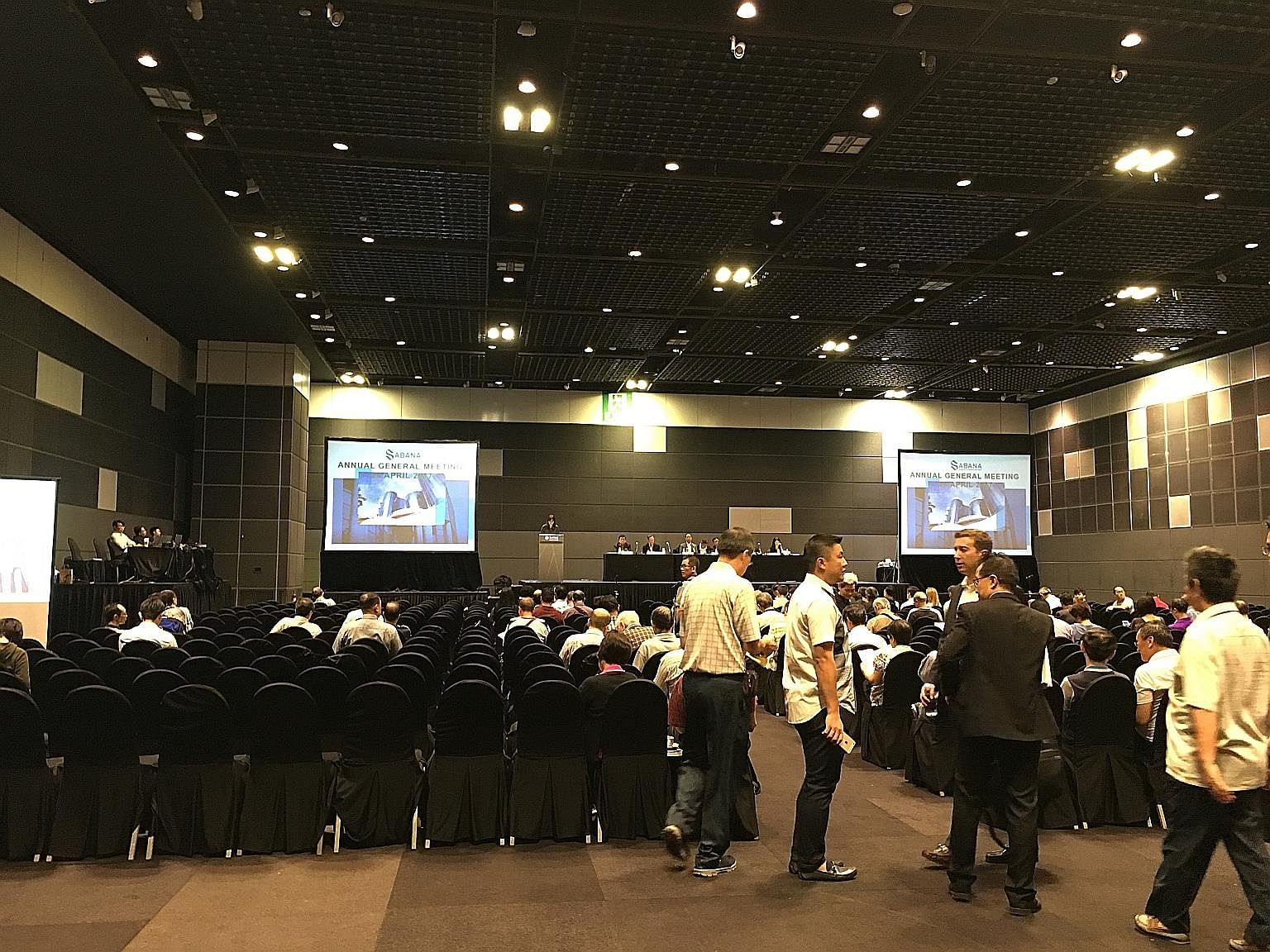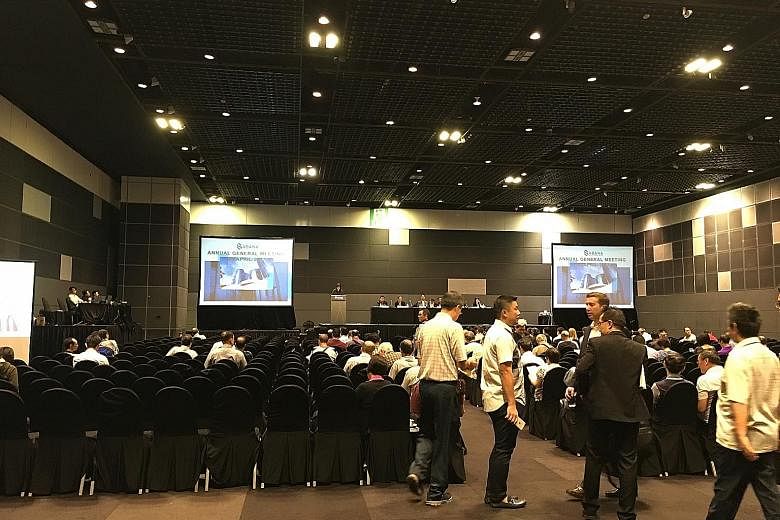As an asset class, real estate investment trusts (Reits) have done so well in the past decade that investors could not go wrong by taking wagers on them.
According to some estimates, Reits have enjoyed an average compounded annual return of 10 per cent over the past five years, assuming that the dividends were reinvested.
This makes them far better as investments than keeping money in the bank, which attracts close-to-zero interest rates.
Reits are closed-end funds that operate in a similar manner to unit trusts. But unlike unit trusts that invest in shares, Reits specialise in income-generating real estate assets such as shopping malls, offices and industrial buildings.
Just because they have worked out fine so far does not mean nothing can go wrong with them. As with other asset classes, there will always be one or two bad apples that fail to make the grade. What do investors do then, other than vote with their feet?
Before answering this question, it would be instructive to take a look at Sabana Reit, where a group of unhappy minority unit holders tried without success to remove the underperforming Reit manager.

First, kudos to them for getting as far as they did in requisitioning the extraordinary general meeting (EGM) to have a vote on the issue. As Mr Jeffrey Low - the stockbroker instrumental in making this happen - noted, nobody had thought that this would even be possible given the disparate way in which the unit holdings had been dispersed.
The issues brought up at the EGM put flesh on concerns voiced over the years about what could in theory go wrong in a Reit and the difficulties of removing a Reit manager even if he underperformed.
It did not help matters that unit holders were advised not to support resolutions to remove the underperforming manager but to give him a chance, as firing him might make the situation worse.
As investor Tay Siew Choon noted in a letter to The Business Times last Wednesday, this is like hoping for the boy who finished last in class to score well in the next examination.
But unlike dealing with problems that can crop up with a high-tech firm, managing a Reit is not rocket science. It should not be too difficult to find a competent replacement manager, wrote Mr Tay.
His observations are valid. But it is still worthwhile to understand the fuss over the need to keep an underperforming Reit manager even when unit holders might be far better off appointing a new one.
The problem lies with the way in which Reits are currently structured.
As with unit trusts, a Reit's assets are held by an independent trust, with a separate management firm appointed to manage the assets. And as with unit trusts, this means that Reit management firms need a special licence from the Monetary Authority of Singapore (MAS) in order to operate.
There's the catch: To get rid of an existing Reit manager, one would need to have a replacement with a proper licence ready to take over immediately. In practice, this can be tough to do.
And doing away with the separate management structure by "internalising" the management within a Reit could cause other problems.
One corporate lawyer said this effectively means the Reit would have to invest in the Reit manager that is managing its assets. That would first require a waiver from MAS since an investment in an unlisted management firm such as a Reit manager is not permitted. It is by no means certain whether MAS would grant such a waiver.
This has led one reader to write to me to ask if MAS licensing rules for Reit managers are so stringent that "instead of protecting the unit holders, they seem to be more protective of sponsors".
Which brings us to the next issue concerning Reits - the role played by the sponsor.
A sponsor, as the name implies, refers to the original real estate owner that has spun off its assets through the Reit it has established. The Reit finances the purchase of the assets through an initial public offering (IPO), with the original owner who acts as the Reit's sponsor retaining a stake following the IPO.
For the sponsor, the icing on the cake is keeping control of the management firm established to manage the Reit asset. This can give it a disproportionately big return through the management and performance fees earned by the Reit manager.
Now, that would not be a problem with a Reit's unit holders if they encounter a good sponsor with a pipeline of top-rated properties to inject into the Reit that could generate mouth-watering yields for them.
But Sabana's disgruntled minority unit holders were aggrieved that their Reit manager had wanted to buy an industrial building for $23 million from Vibrant Group, the Reit's sponsor, under a sale and lease-back plan, despite the weak industrial rental climate.
That Vibrant had paid $10.9 million to purchase the building in 2011 only fuelled the notion that the asset was overpriced. This was despite three valuers - Savills, Knight Frank and Colliers - all coming up with the same valuation for the building.
Vibrant owns 12 per cent of Sabana Reit and indirectly controls 51 per cent of the Reit manager.
Still, the concerns voiced by Sabana unit holders over asset acquisitions were not new.
In fact, when MAS came up with a raft of possible changes more than two years ago to strengthen the Reit market, it noted that the fee structure adopted by some Reits could incentivise Reit managers to grow assets rather than maximise returns.
MAS had wanted performance to be linked to parameters such as a Reit's net asset value per unit, rather than gross revenue, and for Reit managers to charge a fee on a "cost-recovery basis" for making any acquisitions or divestments.
The market practice currently is for a Reit manager to earn up to 1 per cent of the property's price when making an acquisition, and anything between 0.5 per cent and 1 per cent of the sale consideration when making a divestment.
Too bad, MAS did not press ahead with these proposals and, instead, settled for a disclosure-based approach, asking only that the performance fee structure adopted by a Reit manager should be aligned with the long-term interests of investors.
In his letter, Mr Tay highlighted a further concern arising from the Sabana saga. He wondered if some large unit holders, taking advantage of the situation, might have struck a deal in exchange for voting against resolutions to remove the Reit manager.
"All these have long-term implications for Singapore's Reit sector. Reit sponsors can see that they can hold unit holders to ransom as long as they are willing to strike a deal with some big unit holders," he wrote.
What should be done?
Waiting for the market to take corrective action might take too long. Worse, allowing the flaws exposed by the Sabana saga to continue to fester could cause damage to one of Singapore's most successful stock market stories.
Time for the regulators to jump in and come up with remedial measures.


